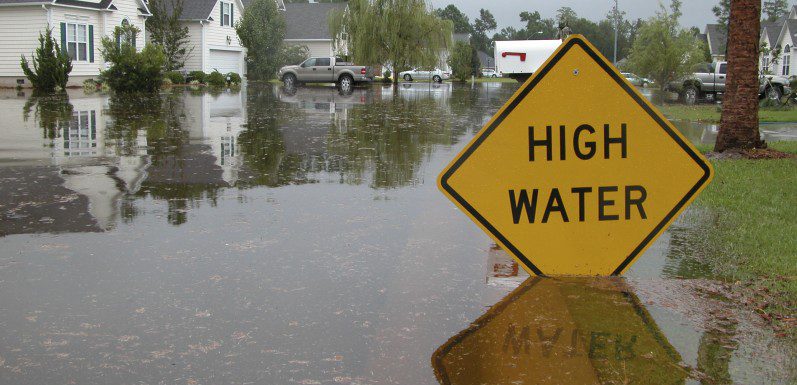
What is Flood Insurance?
Many business owners and homeowners don’t realize that their insurance policies don’t necessarily cover flooding.
Even if you think your home or business will never be affected by a flood since you’re not in a hurricane zone, that doesn’t mean that a sudden heavy rainfall or pipe burst can’t cause detrimental damage to your property.
Without proper flood insurance, you could be stuck with the financial burden of paying for flood damage out of your own pocket. Just one inch of floodwater can cause up to $25,000 in damage, and at least 25 percent of businesses that close after destructive events such as floods never reopen.
Read these helpful tips to get a better understand of what flood insurance is and if this is something you need.
What does it cover?
The NFIP defines a true “flood” as: “an excess of water on land that is normally dry, affecting two or more acres of land or two or more properties.” If you want to make a flood insurance claim, your problem will have to meet the definition of a flood.
A burst water pipe in your basement, for example, may result in a ton of water but isn’t a “flood” by insurance industry standards. Damage from a burst water pipe would be covered by your homeowners insurance. Mudflow and erosion can also qualify as “floods.” For example, a river of mud caused by a wildfire or long, heavy rain can be a “flood” that’s covered by flood insurance.
In the event of a flood, your policy covers direct physical losses to your structure and belongings. Federal flood insurance covers two main things: Your property (the building or your home) and your belongings (contents). You can buy a building-only policy, a contents-only policy or both. Here are some examples of what both cover:
Building Coverage: Plumbing system, furnace, appliances, carpet, foundation walls, etc
Content Coverage: clothing, furniture, artwork, curtains, etc
How does it work?
Having this coverage helps homeowners or businesses recover faster when floodwaters recede. Instead of paying out of pocket or taking out loans to cover your expenses, flood insurance can help make the recovery process quicker, easier and less costly.
The two big advantages of non-NFIP policies are that they can pay out full replacement costs (whereas NFIP payments account for depreciation), and they can include coverage for loss of business during the rebuilding phase (loss of business is not covered by NFIP).
Building coverage policies typically pay out on a replacement cost basis which is what it would take to repair the property in today’s dollars with a maximum coverage limit. Content coverage policies pay out on an actual cash value basis, which takes depreciation into account, and also has a max coverage limit.
In some cases, flood insurance policies don’t take effect until after a 30-day waiting period, so it’s not smart to wait until heavy rain is forecasted in your business’ location. You can purchase a government-run National Flood Insurance Program (NFIP) policy through one of our experienced agents.
Should I get Floor Insurance?
Whether your business or home is located in an area of common flooding or not, flood insurance is worth exploring.
Any flood can easily wipe out a person’s savings as they not only try to replace what was damaged but may have to find other living accommodations for an extended period of time.
Suffering a flood can wipe out a business, because it’s not just a matter of replacing damaged equipment and repairing buildings, but also the sheer time it takes, during which the facilities can’t be used. With commercial properties, sudden excessive rainfall isn’t necessarily the biggest flood risk. You must also factor in drains getting clogged, which can turn a normal rainfall or snow storm into an unexpected catastrophic event.
If you have more questions or would like to include floor insurance into your business coverage, reach out to one of our experienced agents today.





